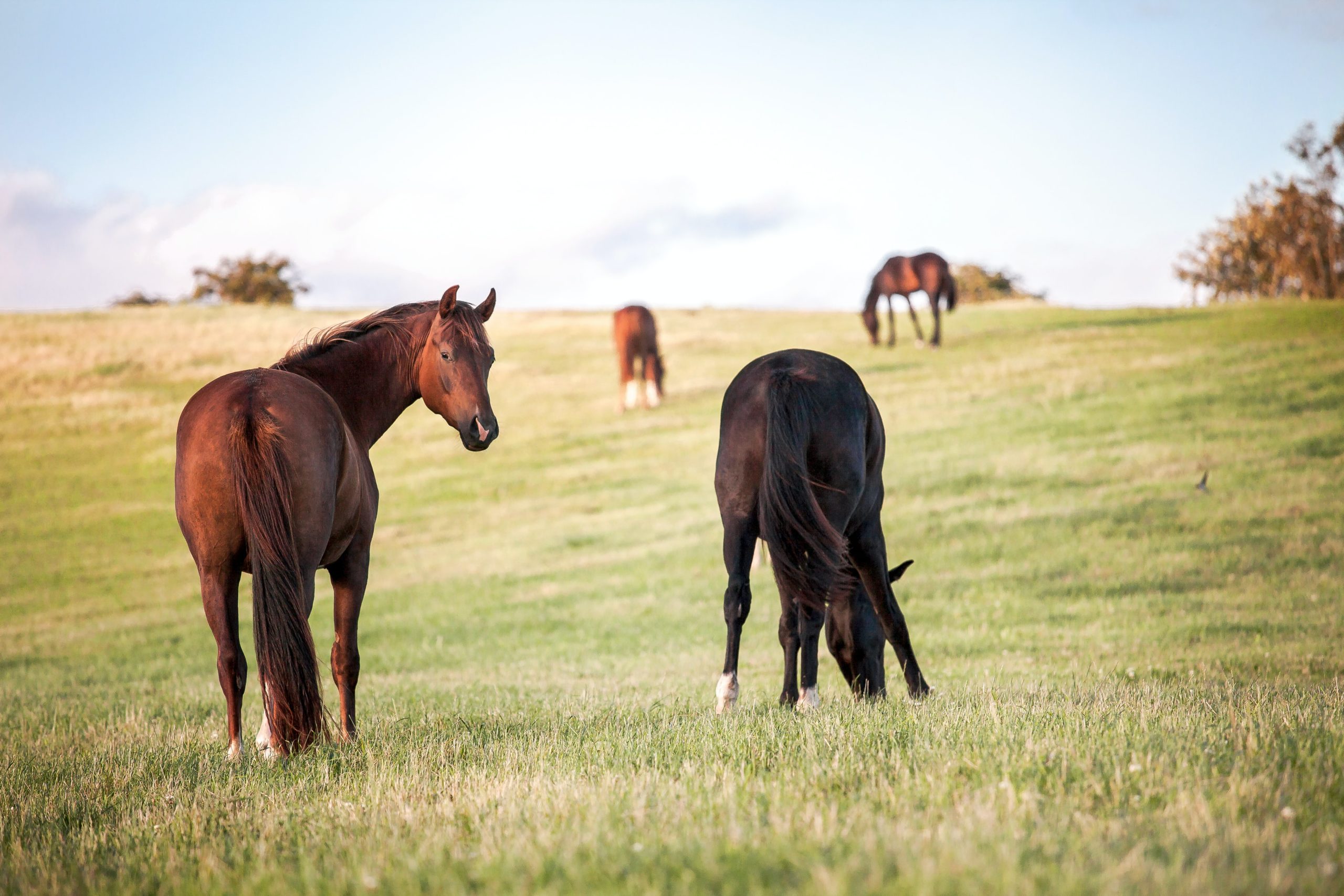Middle Tennessee recently had a “cool” snap—and by that, we mean that the humidity dropped to bearable levels and the thermometer didn’t top 90 degrees. We were able to spend time outdoors without feeling like we were immediately drowning in sweat.
We’re sure farm animals appreciated the pleasant weather just as much as the humans did.
However, this reprieve is set to be brief, and for most of us in the United States, August is still thick with the heat and humidity of summer.
While we have the blessing of air conditioning, our livestock do not. It’s up to us to take measures to keep our animals cool as the temps climb higher with the sun each day.
How to Spot Heat Stress & Heatstroke in Livestock
Unlike dogs, most livestock don’t pant to expel body heat, so the signs of heat stress are less obvious.
Horses sweat, but other livestock, like cows, goats, pigs, and sheep do not. When overheated, they may hold open their mouths and their snouts may be wet.
Heatstroke—grave overheating in an animal—includes symptoms like disorientation, lack of appetite, lethargy, increased salivation, increased respiration rate, and shaking.
If you notice heat stress or heat stroke in livestock, immediately move the animal out of the sun and into shade. Provide them with cold drinking water and mist the overheated animal with cool water, especially on legs and feet. Lay wet towels over the overheated animal. Provide air flow through a fan. Add electrolytes to the drinking water—you can find these at your local feed store.
If your animal does not show signs of improvement, contact your veterinarian ASAP.
Learn more on treating heat stress in livestock here.
It’s important to remain vigilant during heat waves and take extra precautions to ensure your livestock do not overheat.
Below are 5 tips for keeping your livestock cool during the hot summer months.
Water, water everywhere.
The more, the merrier: this is especially true when it comes to providing water for your livestock. One horse alone consumes between 8 – 12 gallons of water per day, while some dairy cattle drink up to 24 gallons daily.
Provide multiple water troughs for your herds. By providing multiple troughs, you ensure that weaker animals are not bullied away from the troughs by thirsty, more aggressive animals.
Keep these water troughs in the shade, and refresh the water regularly—multiple times a day if it is outrageously hot or your animals are slurping up the water quickly.
If you enjoy a good DIY project, you can also install automatic waterers, with pipes refilling the troughs throughout the day. These automatic waterers can be found at your local feed store or even from Amazon.
Give your livestock a refreshing drink by making “ice cubes” for your livestock by freezing plastic buckets of water.
Like Ice Cream (but Not Really): Chill Your Feed.
If you have space, chill your livestock’s daily grain prior to feeding. Make sure your daily feeding is taking place at the end of the day, during the cooler hours of the day, since the energy emitted during the digestive process causes the animal to heat up. You can also freeze your livestock’s treats, like fruit or veggies.
Fun in the Sun, but Safe in the Shade.
Shade, shade, and more shade: that’s the name of the game when it comes to keeping your animals cool in the summer.
If your animals are in a pasture that is decidedly without trees, you’ll need to provide some form of shelter, like a run-in shed, to provide shade from the glaring sun.
You can find plans for building a livestock run-in shed here.
Let the air flow.
If your animals will be kept in a barn for any length of time, air flow is essential. Set up fans in your barn to provide a continuous cooling breeze for your barn animals. We also encourage installing a misting system if your livestock will spend considerable amounts of time in a barn during the heat.
Lather up with sunblock.
Did you know that a horse’s nose can sunburn? It’s true!
If your horse has a pink nose, you’ll need to lather him or her up with sunblock. Go with any child-friendly sunblock at SPF 15 or higher. No need to go over SPF 50, as there’s not much more protection in the higher SPF rankings.
Read more about protecting your horse from sunburn here.
A Bonus Reminder: Say No to Parked Cars.
While we doubt you’re transporting your sheep in the backseat of your car, it’s a worthwhile reminder to NEVER leave your companion pets, like dogs, in a hot car for any length of time.
A study found that on a sunny day, a car’s interior temperature can increase by 40°F within one hour—with the largest temperature increase occurring in the first 30 minutes. Researchers found temperatures increase to dangerous levels even on days when the air outside the car is a comfortable 70°F. Despite having windows cracked, this did little to keep the temperatures down.
The takeaway is simple: don’t leave your pets, children, (or livestock if that’s your sort of thing) in a parked car for any length of time.


